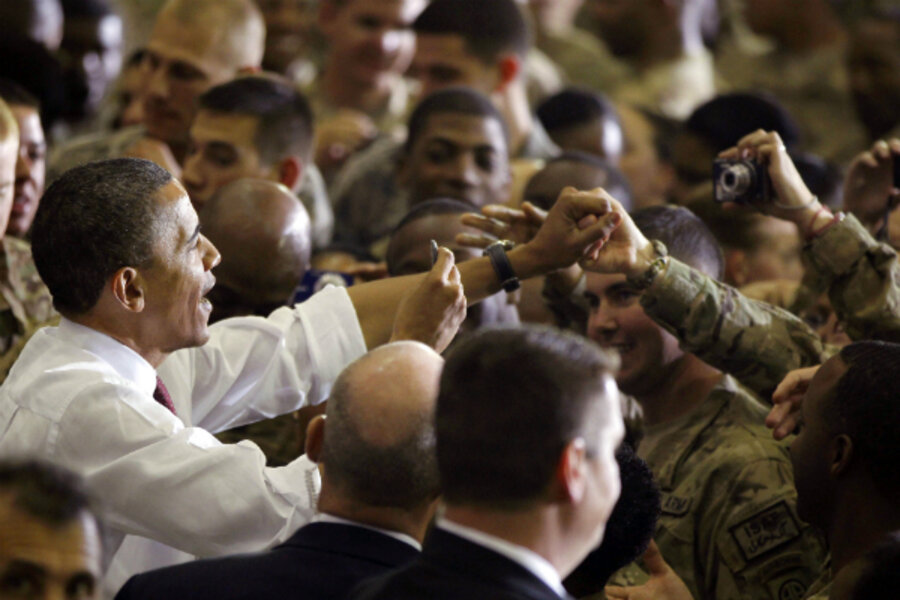Pentagon signals 'acute' problems in Afghanistan, even as US cuts forces
Loading...
| Washington
Largely overshadowed by President Obama’s trip to Afghanistan, the Pentagon Tuesday released a congressionally mandated report on the progress of the war that acknowledged a “resilient” Taliban and pointed to “long-term and acute challenges" for a US military whose presence on the ground will decline considerably in many of the most violent areas of the country in the months to come.
Though the report emphasizes some security improvements, plenty of problems that the US military has been grappling with for years remain unresolved. Many are simply “beyond the capability of the US military to address – and beyond the capacity of the military to fix,” says Brian Jenkins, a former special forces officer and senior adviser to the president of the RAND Corp., a defense consulting firm that works closely with the Pentagon.
First among these, US defense officials widely agree, are the Taliban and Al Qaeda safe havens in Pakistan, from which the insurgent fighters who battle US troops “operate with impunity,” the report notes. These remain among “the biggest risks to the process of turning security gains into a durable and sustainable Afghanistan.”
The Pentagon has for years touted “security gains,” while noting that they are “fragile and reversible.” This week’s report, which is due to Congress every six months, is no different, acknowledging that insurgents “will likely attempt to regain lost ground and influence this spring and summer through assassinations, intimidation, high-profile attacks, and the emplacement of improvised explosive devices (IEDs).
At the same time, the US military is in less of a position to handle such counterattacks. Today, there are some 88,000 US troops in Afghanistan, down from 101,000 last year. That number will decline by another 20,000 by year’s end.
In the violent southern Afghan province of Helmand, the US Marines are slated to withdraw more than 60 percent of their forces from the country by October, dropping from 18,000 troops to less than 7,000.
There is, too, the problem that affects and upsets most Afghans: “widespread corruption" that limits the effectiveness of the government. When Afghan officials rip off average citizens, it also bolsters the cause of insurgents, who use such cases to recruit followers.
But the capacity of the US military to grapple with these issues remains limited. While the mere presence of foreign forces in Afghanistan “provides a great deal of economic benefit to the country, on the other hand, those kinds of sums of money also create enormous opportunities for corruption,” says Mr. Jenkins.
On the bright side, the report notes a decline between October and March in “enemy-initiated attacks” after five consecutive years in which these attacks “increased sharply.” In the past, to explain these increases, US military officials tended to note that those attacks were up because US troops were “taking the fight to the enemy,” and were engaged in intense operations.
The decrease in attacks could also point to fewer troops on the ground as well. As US troop strength decreases, however, the number of Afghan national security forces (ANSF) trained continues to grow. That said, ANSF forces are still not yet responsible for more than half of of the Afghan population. As of September 2011, no Afghan police unit – and only one Afghan Army unit – had been deemed ready to operate independently, even with the help of advisers.
Those figures have increased in the past six months, but it remains to be seen, analysts say, whether they can hold these gains long after US troops leave.







